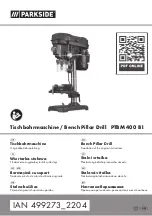
CAUTION: Spiders and small insects occasionally spin
webs or make nests in the grill burner tubes during transit
and warehousing. These webs can lead to gas flow
obstruction which could result in a fire in and around burner
tubes. This type of fire is known as “FLASH-BACK” and can
cause serious damage to your grill and create an unsafe
operating condition for the user.
Although an obstructed burner tube is not the only cause of
“FLASH-BACK”, it is the most common cause.
To reduce the chance of “FLASH-BACK”, you must clean
the burner tubes before assembling your grill, and at least
once a month in late summer or early fall when spiders are
most active. Also perform this burner tube cleaning
procedure if your grill has not been used for an extended
period of time.
See Cleaning Burner Tubes and Ports on page # 10.
Visually check the burner flames prior to each use. The flames should
look like picture, if they do not, refer to the cleaning burner tubes and
ports, see page 10 of this manual.
CAUTION: Beware of Flash-Back
Burner Flame Check
1. Make a 50/50 (soap/water) mild soap solution.
2. Turn the control knobs to full OFF position; then turn gas ON at
supply tank.
3. Apply the soap solution with a clean brush to all gas connections.
See below. If growing bubbles appear in the solution the
connections are not properly sealed. Check each fitting and
tighten or repair as necessary.
4. If you have a gas connection leak you cannot repair, turn gas
OFF at supply tank, disconnect fuel line from your grill and call
1-800-913-8999 or your gas supplier for repair assistance.
5. Also apply soapy solution to the tank seams. See below. If
growing bubbles appear, shut tank OFF and do not use or move
it! Contact an LP gas supplier or your fire department for
assistance.
Gas Connection Leak Check
Gas Tank Leak Check
Checking for LP gas leaks
Never test for leaks with a flame. Prior to first use, at the beginning
of each season, or every time your LP gas tank is changed, you
must check for gas leaks.
5






































